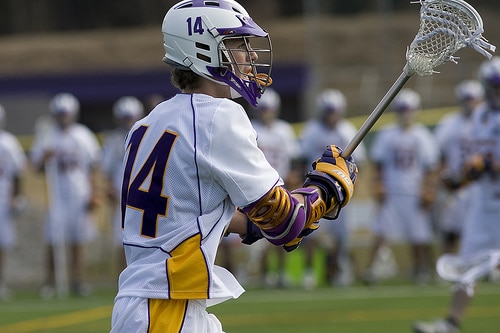Frequently Asked Questions
Lacrosse Injuries FAQs
Can Chiropractic and Rehabilitation Treatments Help with Lacrosse Injuries
Lacrosse is an intense sport marked by by rapid speed, changes in direction and forceful collisions. Over time the powerful motions associated with lacrosse can result in joint, muscle, tendon and ligament damage. Sudden jarring motions and repetitive motions can cause misalignments and nerve irritation. Using a detailed functional exam and history, we can determine what is causing your pain, what are the factors contributing to your pain and what is the best course of action to resolve the issue as rapidly as possible. Dr. Ward has worked with Division One athletes at Georgetown University and understands the high-stakes, competitive lacrosse environment in the DMV region. We collaborate with parents, coaches, athletic trainers and other healthcare providers to deliver a comprehensive treatment plan.
Can Chiropractic and Rehabilitation Treatments Help Knee and Ankle Injuries from Lacrosse?
Knee and ankle injuries are the most common complaints that hinder lacrosse athletes. The quick cutting motions used on the field can result in joint, ligament and muscle strain. At Ward Chiropractic and Rehabilitation we offer a comprehensive approach that focuses not only on the affected region but also the adjacent joints. For example in an athlete with a knee injury we will assess and treat the knee, ankle, foot, hip and spine. This is because the alignment of the knee is impacted by the arches of the feet, tightness in the hips and so on.
Our global treatment approach yields lasting recovery. Chiropractic adjustments are specifically directed to restore the correct alignment. Proper alignment is important for healing and prevention of future injuries. The alignment of the knee and hip as measured by the Q-angle is an important factor in ACL and other knee issues. We also use rehabilitative exercises strengthen, improve balance and mimic lacrosse specific movements. Our goal is to return you to play as soon as possible.
I Have Low Back Pain when I Play Lacrosse, Can You Help?
Low back pain from lacrosse is most often the result of repetitive strain due to running and the rotation of the lumbar spine during play. Injuries can often occur from a single event such as a collision. In either case, the key to treatment involves identifying the specific structure in the back that is injured. The low back is a complicated system of muscles, joints, discs, ligaments and nerves. Our detailed diagnostic approach allows us to assess the range of motion and alignment of the many low back structures. The sacroiliac or SI joint is a structure that is commonly injured in lacrosse. SI joint misalignment of dysfunction will cause pain in the low back to the left or right of the spine. Treatment involves realignment through chiropractic adjustments and rehabilitative exercises to enable gluteal muscle activation which stabilizes the joint.

We pride ourselves in our caring and long-term relationships we develop with our patients, so schedule an appointment today. We look forward to seeing you!
I Pulled my Hamstring while Playing Lacrosse, Can You Help?
Hamstring injuries are frustrating for athletes because they prevent optimal performance and often become nagging. Additionally, the rate of re-injury for hamstring pulls is high. These injuries present as pain in the back of the leg with activity. Often a bruise or a bump on the back of the leg is present. Bending or flexion of the knee can relieve the pain. The key to treatment involves addressing the entire body and determining why the hamstring injury occurred initially.
We use soft tissue techniques similar to massage and rehab the hamstring through stretching and strengthening the muscle. What sets us apart however is our assessment of the other body parts that are contributing the problem. For example, individuals with an anterior pelvic tilt or a pelvis that is rotated forward are much more likely to have chronic hamstring issues. This is because the position of the pelvis constantly elongates the hamstrings making them susceptible to injury. Addressing only the hamstring problem but not the pelvic tilt in these athletes will result in a short term fix. We strive to provide treatment that not only fixes the immediate complaint but also the compensations and underlying causes.

